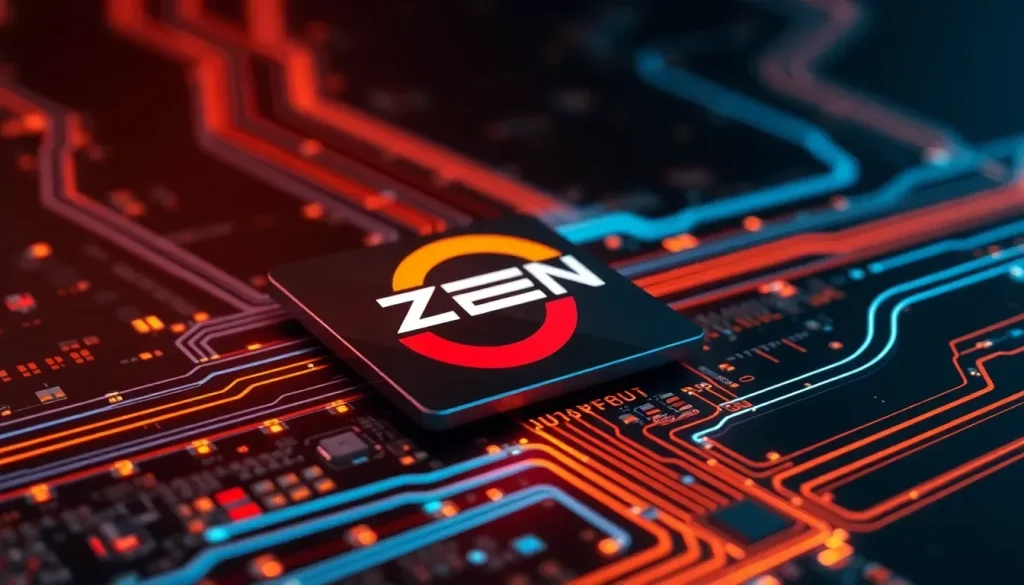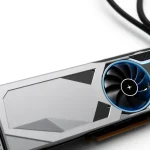AMD Zen 6 features high frequencies and Die Bridge for low latency

The tech world is buzzing with excitement as AMD gears up for its next-generation CPU architecture, Zen 6. This release promises to elevate performance standards and redefine expectations in the processor market. With advancements like the Die Bridge and innovative packaging techniques, Zen 6 is set to make waves. But what exactly do these features entail, and how will they impact users? Let’s dive deeper into the upcoming innovations.
New technologies: Die Bridge and advanced packaging in Zen 6
Recent confirmations from multiple sources indicate that AMD is moving forward with significant innovations for its Zen 6 architecture. Notably, the Die Bridge will be manufactured by UMC, diverging from the previous reliance on TSMC for similar processes. Additionally, the packaging will be developed by SPIL, utilizing their Fan-Out Embedded Bridge (FOEB) technology. This strategic partnership showcases AMD's commitment to advancing its technology and maintaining high performance standards.
Historically, AMD has collaborated with UMC and SPIL, particularly in the production of their Vega 10 and Vega 11 GPUs. However, with Zen 6, the incorporation of these technologies aims to enhance both CPU performance and user experience without escalating costs for consumers. AMD is determined to push boundaries rather than take steps back, ensuring that pricing remains competitive.
Understanding the Die Bridge and its implications
The Die Bridge is a groundbreaking innovation that integrates new connectivity solutions for CPU chiplets, which include the Core Complex Dies (CCDs) and I/O dies (IODs). This concept marks a shift from traditional monolithic die designs to a more modular architecture, enabling AMD to enhance performance while reducing latency.
The Die Bridge operates in conjunction with the FOEB packaging, which has been designed to improve interconnectivity between chiplets. Here’s how it works:
- Reduced Latency: The use of FOEB allows for faster data transfer between chiplets, minimizing delays.
- Compact Design: The integration of a silicon bridge instead of traditional interposers leads to a thinner, more efficient package.
- Cost-Effective: FOEB technology is less expensive to produce than traditional methods, which may reflect in the final consumer pricing.
- Enhanced Thermal Management: The new design offers better thermal performance, allowing for higher clock speeds and improved power efficiency.
Fan-Out Embedded Bridge: A closer look
The Fan-Out Embedded Bridge developed by Siliconware Precision Industries (SPIL) is a game changer in the packaging arena. This technology uses a high-density silicon bridge to connect multiple chiplets, effectively enhancing overall performance.
The integration process involves:
- Redistribution Layer (RDL): This layer facilitates the connections between the chiplets, allowing for more compact designs.
- Nanoscale Interconnections: The use of nanometric wires significantly enhances data transfer rates.
- High-Density Packaging: The end result is a compact, high-performance package that improves signal integrity.
Transitioning from Infinity Fabric to Fan-Out Link D2D
One of the most significant changes in Zen 6 is the shift from the traditional Infinity Fabric to the new Fan-Out Link D2D (Die-to-Die) system. This transition underscores AMD's commitment to innovation.
Unlike earlier designs where the Infinity Fabric managed inter-chip communication, the Fan-Out Link will provide a more streamlined connection between the CPU components. This shift not only enhances performance but also opens the door for future architectural advancements.
Pricing strategies and market positioning
Despite the considerable advancements in technology, AMD is committed to maintaining pricing strategies that will not burden consumers. While there are rumors of slight price increases associated with the new architecture, AMD aims to ensure that these will not reflect significant costs to users.
Key points regarding pricing include:
- Minimal Increase: AMD projects that the new manufacturing technologies will not significantly inflate production costs.
- Competitive Edge: With no substantial jumps in prices, AMD plans to keep its products affordable against competitors.
- Incremental Improvements: Any price adjustments are expected to align with enhancements in performance and features.
Future of CPU technology: Vertical Cache and beyond
As AMD continues to innovate, the implementation of vertical cache technology remains a topic of interest. Speculation about integrating vertical cache above the CCD has circulated, but AMD is unlikely to revert to earlier designs.
According to insider reports, the vertical cache structure will likely remain below each CCD, aligning with AMD's ongoing developments in cache technology:
- Substrate Layer: Utilizing advanced interposer technology.
- Improved Interconnects: Enhancing communication between cache and processing units.
- Thermal Efficiency: Optimizing heat dissipation for sustained performance.
For those interested in a deeper dive into AMD's upcoming innovations, check out this informative video on YouTube:
In conclusion, AMD's Zen 6 is poised to redefine what we expect from processors. With cutting-edge technologies like the Die Bridge and FOEB, combined with a commitment to affordability and performance, AMD is set to maintain its competitive edge in the CPU market. As we look forward to its release, it’s clear that Zen 6 is not just an incremental update, but a significant leap forward for AMD and its customers.




Leave a Reply